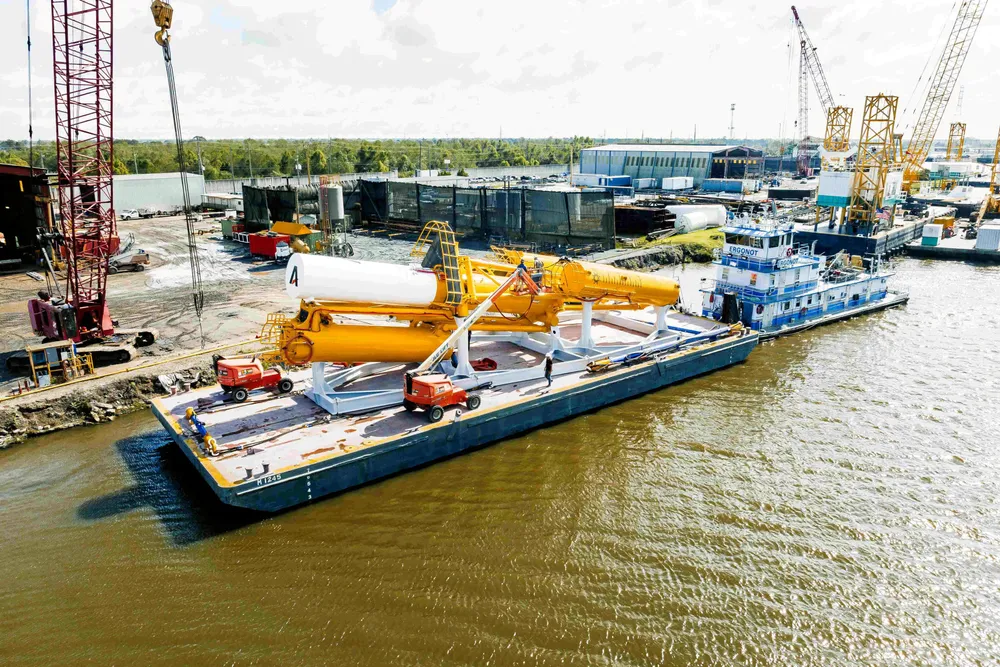Bill Gates-backed 'fold-up' floating wind platform hits the water
Breakthrough Energy-funded Aikido's compact configuration aims for shorter build times and reduced costs

Wind power startup Aikido Technologies announced it completed fabrication of a quarter-scale version of its billionaire-backed floating turbine platform in less than 40 hours, claiming to set “a new standard in the industrialisation” of the sector.
The Aikido One platform was constructed by offshore energy contractor Chet Morrison at the Port of Pascagoula in Mississippi on the Gulf of Mexico to “enable offshore wind project developers to increase the speed of deployment and reduce costs,” Aikido added.
“We have learned not only how to better design our technology, but how to better build it,” he added.
San Francisco-based Aikido was established in 2022 on seed money by Breakthrough Energy Fellows, the energy innovation vehicle sponsored by Microsoft founder Bill Gates.
The company also announced the signing of a memorandum of understanding with the Port of Pascagoula in the Gulf of Mexico state of Mississippi to provide testing space for the Aikido One platform.
The company chose to assemble its 100kW platform in the Gulf of Mexico to leverage the region’s vast offshore energy supply chain of ports, steel fabricators, and experienced workers.
Turbulent times for US floating wind
Some 60% of US feasible offshore wind capacity will require floating platforms, and the sector’s pipeline has grown to 25GW, with more than 7GW of capacity already under development off California and four leases in the Gulf of Maine purchased in last month’s auction.
Aikido says its platform can be assembled, transported and loaded-out in a compact configuration, allowing existing barges and smaller port areas to be utilised even for 15MW-plus turbines.
Its technology “can dramatically reduce construction times and increase the supply of ports and vessels that can participate in the offshore wind industry,” the company said, overcoming key bottlenecks facing sector development.
Kanner said the company is looking for opportunities to deploy its quarter-scale model and expects to launch a full-scale version by 2028.
Outgoing President Joe Biden’s administration had huge goals for floating wind, setting a 15GW by 2035 target enabled by 70% cost reductions through technology innovations funded by Department of Energy (DoE).
His successor, Donald Trump, however, is a fierce critic of offshore wind development and has vowed to shut down the sector “on day one” of his new administration, 20 January 2025.